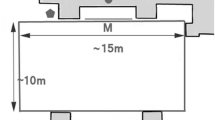Summary
The sun compass was discovered by G. Kramer in caged birds showing migratory restlessness. Subsequent experiments with caged brids employing directional training and clock shifts, carried out by Hoffmann and by Schmidt-Koenig, showed that sun azimuth is used and sun altitude ignored. McDonald found the accuracy to be ±3o–±5o. According to Hoffmann and to Schmidt-Koenig, caged birds trained at medium northern latitudes were able to allow for the sun's apparent movement north of the arctic circle but not in equatorial and trans-equatorial latitudes.
In homing experiments, and employing clock shifts, Schmidt-Koenig demonstrated that the sun compass is used by homing pigeons during initial orientation. This finding supports the existence of a map and compass navigational system. Pigeons living in equatorial latitudes utilize the sun compass even under the extreme solar conditions of equinox (Ranvaud, Schmidt-Koenig, Ganzhorn et al.). The use of the sun compass during zenith passage of the sun is being investigated.
Similar content being viewed by others
References
Alexander, J. R., The effect of various phase-shifting experiments on homing in pigeons. Ph.D. Thesis, Cornell Univ., Ithaca, New York 1975.
Füller, E., Kowalski, U., and Wiltschko, R., Orientation of homing pigeons: compass orientation vs piloting by familiar landmarks. J. comp. Physiol.153 (1983) 55–58.
Ganzhorn, J. U., Kiepenheuer, J., Ranvaud, R., and Schmidt-Koenig, K., How accurate is the sun compass of the homing pigeon?, in: Orientation and Navigation — Birds, Humans, and other Animals. Cardiff 1989. The Royal Institute of Navigation, London paper No. 6, 1989.
Graue, L. C., The effect of phase shifts in the day-night cycle on pigeon homing at distances of less than one mile. Ohio J. Sci.63 (1963) 214–217.
Hoffmann, K., Versuche zu der im Richtungsfinden der Vögel enthaltenen Zeitschätzung. Z. Tierpsychol.11 (1954) 453–475.
Hoffmann, K., Die Richtungsorientierung von Staren unter der Mitternachtssonne. Z. vergl. Physiol.41 (1959) 471–480.
Keeton, W. T., Orientation by pigeons: is the sun necessary? Science165 (1969) 922–928.
Kramer, G., Orientierte Zugaktivität gekäfigter Singvögel. Naturwissenschaften37 (1950) 188.
Kramer, G., Eine neue Methode zur Erforschung der Zugorientierung und die bisher damit erzielten Ergebnisse. Proc. X. Ornithol. Congr. Uppsala 1951, pp. 269–280.
Kramer, G., Wird die Sonnenhöhe bei der Heimfindeorientierung verwertet? J. Orn.94 (1953) 201–219.
Kramer, G., and v. St. Paul, U., Stare (Sturnus vulgaris L.) lassen sich auf Himmelsrichtung dressieren. Naturwissenschaften37 (1950) 526–527.
Matthews, G. V. T., Sun navigation in homing pigeons. J. exp. Biol.30 (1953) 243–267.
Matthews, G. V. T., Bird Navigation. Cambridge University Press, Cambridge 1955.
McDonald, D. L., Some aspects of the use of visual cues in directional training of homing pigeons, in: Wallops Island (1972) 293–304.
Neuss, G., and Wallraff, H. G., Orientation of displaced homing pigeons with shifted clocks: predictions vs observations. Naturwissenschaften75 (1988) 363–365.
Phillips, J. B., and Waldvogel, J. A., Celestial polarized light patterns as a calibration reference for sun compass of homing pigeons. J. theor. Biol.131 (1988) 55–67.
Ranvaud, R., Schmidt-Koenig, K., Kiepenheuer, J., Gasparotto, O. C., and Britto, L. R. G., Compass mechanism of homing pigeons at the magnetic equator. Acta XIX Congr. Int. Ornith., Ottawa 1986, 297–304.
Santschi, F., Observations et remarques critiques sur le mécanisme de l'orientation chez les fourmis. Revue suisse Zool.19 (1911) 303–338.
Schmidt-Koenig, K., Experimentelle Einflußnahme auf die 24-Stunden-Periodik bei Brieftauben und deren Auswirkungen unter besonderer Berücksichtigung des Heimfindevermögens. Z. Tierpsychol.15 (1958) 301–331.
Schmidt-Koenig, K., Internal clocks and homing. Cold Spring Harbor Symp. quant. Biol.25 (1960) 389–393.
Schmidt-Koenig, K., Die Sonne als Kompass im Heim-Orientierungssystem der Brieftauben. Z. Tierpsychol.68 (1961) 221–244.
Schmidt-Koenig, K., Sun compass orientation of pigeons upon equatorial and trans-equatorial displacement. Biol. Bull.124 (1963) 311–321.
Schmidt-Koenig, K., Sun compass orientation of pigeons upon displacement north of the arctic circle. Biol. Bull.127 (1963) 154–158.
Schmidt-Koenig, K., Weitere Versuche, durch Verstellen der inneren Uhr in den Heimkehrprozess der Brieftaube einzugreifen. Verh. dt. zool. Ges.33 (1969) 200–205.
Schmidt-Koenig, K., New experiments on the effect of clock shifts on homing in pigeons, in: Animal Orientation and Navigation. Eds S. R. Galler, K. Schmidt-Koenig, G. J. Jacobs and R. E. Belleville. NASA SP-262 US Govt Printing Office, Washington D. C. 1972.
Schmidt-Koenig, K., Avian Orientation and Navigation. Academic Press, London 1979.
Schmidt-Koenig, K., Das Rätsel des Vogelzugs. Hoffmann und Campe, Hamburg 1980; Ullstein, Frankfurt, Berlin 1986.
Schmidt-Koenig, K., Ganzhorn, H., and Buschold, A., Heimkehrversuche mit Brieftauben am magnetischen Äquator. Tübingen Univ. Zeitung31 (1987) 17–18.
Walcott, C., The navigation of homing pigeons: do they use sun navigation? Wallops Island (1972) 283–292.
Walcott, C., and Michener, M. C., Sun navigation in homing pigeons — attempts to shift sun coordinates. J. exp. Biol.54 (1971) 291–316.
Wiltschko, R., Die Sonnenorientierung der Vögel, in: Die Rolle der Sonne im Orientierungssystem und die Funktionsweise des Sonnenkompasses. J. Orn.121 (1980) 121–143.
Wiltschko, W., and Balda, R. P., Sun compass orientation in seedcaching scrub jays (Aphelocoma coerulescens). J. comp. Physiol.A 164 (1989) 717–721.
Wiltschko, R., and Wiltschko, W., The development of sun compass orientation in young homing pigeons. Behav. Ecol. Sociobiol.9 (1981) 135–141.
Wiltschko, W., Wiltschko, R., and Keeton, W. T., Effects of a “permanent” clock-shift in the orientation of young homing pigeons. Behav. Ecol. Sociobiol.1 (1976) 229–243.
Author information
Authors and Affiliations
Rights and permissions
About this article
Cite this article
Schmidt-Koenig, K. The sun compass. Experientia 46, 336–342 (1990). https://doi.org/10.1007/BF01952166
Published:
Issue Date:
DOI: https://doi.org/10.1007/BF01952166




